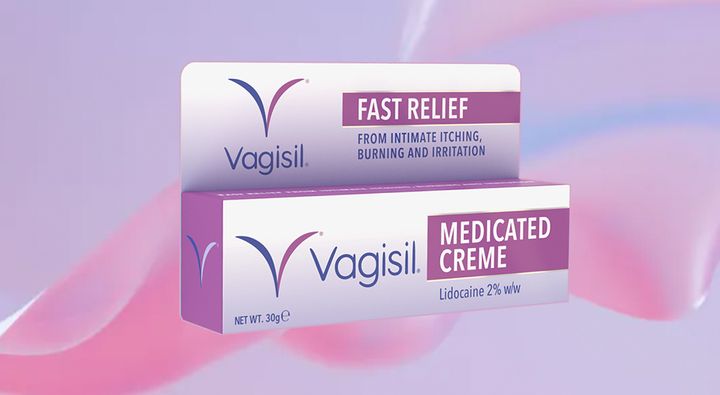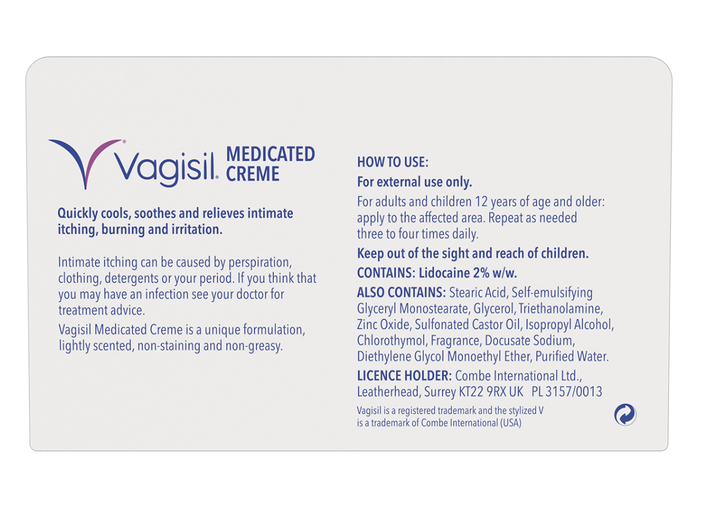
The world is still afraid of the word ‘vulva,’ the anatomically correct term for the external genital organs at least half of the population possess.
So ingrained is the stigma surrounding the word, women remain confused about the language they should use to describe their own body parts. In fact, 73% of women don’t technically know what a vulva is.
Sub-standard sex education in schools is no doubt partly to blame, but it’s not helped by the fact that brands which specialise is vaginal and vulval health won’t even use the right words.
Take Vagisil, for example. Although the brand’s website does speak about the “vagina” and “vaginal health”, its product packaging still relies on the phrases “intimate itching”, “intimate wash” and “intimate wipes”.
Instructions on the back of its medicated creme tell women the product is for “external use only” – with no mention of the word “vulva”.

It’s why writer and poet Hollie McNish recently tagged the brand in posts on Instagram and Twitter, calling for women’s health brands to end the use of euphemisms in their marketing materials.
“Dear world where we don’t even write the words for female genitals on instructions for cream for female genitals. What does ‘apply only on external intimate areas’ mean?” she asked. “Like not in the vagina? Or only on the top of the vulva? Or outer but not inner labia?”
Sure, there’s an argument that brands use this wording because a lot of us aren’t clued up about the correct phrases – but how is the cycle ever going shift unless we see the correct language used?
They could always follow up with a short description if needed. FYI: the vulva is all the external organs you can see outside the body, including the mons pubis, labia majora (outer lips), labia minora (inner lips) and clitoris (the sexy bit).
Laura Dowling, known as The Fabulous Pharmacist on Instagram, agrees that brands need to ditch these euphemisms for women’s anatomy – especially when they’re selling targeted women’s healthcare products.
“The words vulva and vagina are much more specific than vague terms such as ‘intimate areas’ or ‘use externally,’” she tells HuffPost UK.
“Women and girls need to be able to name their genital anatomy correctly. This reduces the shame around the female body, particularly for our younger girls. If women and girls can’t name their body parts correctly and without shame how can they access care if they have issues with their vulva or vagina? It’s empowering.
“My three young boys have been taught the correct words for genitals from babyhood. So much so that they actually correct people who use the term vagina instead of vulva! It’s heartwarming to witness!”
Dr Jen Gunter, dubbed “Twitter’s resident gynaecologist”, also says woman are using so-called “feminine washes” on the wrong body parts because of confusing language.
“Many of them actually have scents in them. Your vulva skin is more sensitive to irritation, and fragrance is a very common trigger for irritation,” she previously told HuffPost UK.
“Also, some women are using these products internally, because we don’t use the right language – we don’t say ‘vagina’ and ‘vulva’ – it’s evolved into this catch-all grey zone. If you use them internally, you can damage your vaginal ecosystem – your good bacteria.”
HuffPost UK has contacted Vagisil for comment about the language it uses and will update this article if we receive a response.
It’s worth saying too, that some brands are starting to change their language, helping the next generation of young women get clued up about their bodies.
Canesten – which makes thrush cream, among other products – has recently teamed up with the PSHE Association to launch The Truth, Undressed, a set of lesson plans for secondary schools to promote understanding of vulval and vaginal health. The brand’s products also now use the word “vulva”.
So it can be done – and we’d love more of it.